Be the First to Know About Our Diamond Discoveries.
Investment Highlight Fact Sheet
1. Evidence from CF Mineral Research Lab suggests at least 7/9 diamondiferous secondary till bodies discovered host prospective chemistry for the discovery of large diamonds (50+ carats). Sampling testing indicated seven discoveries contain signifant KIMs originating 200-400+ km below the earth’s surface in the upper mantle, and as low as the diamond transition zone where many large diamonds (50+ carats) originate. These kimberlites also contain eclogitic garnets originating in subduction zones, also theorized to be the main origin of large-carat, quality diamonds, elsewhere in the world. Below is a modified image illustrating the theory of how RJK’s kimberlite discoveries made their way to surface (the source kimberlite of these discoveries has yet to be drilled).
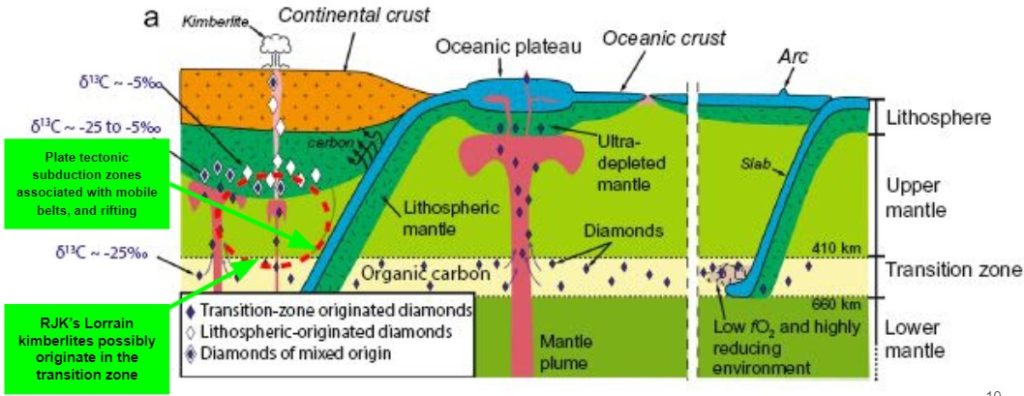
2. The discovery zone thus far covers a 10×9 km area, and could extend further. The diamondiferous till intersects are as shallow as 2m from surface, with a median of 4m from surface. Paradis averages 11m in thickness, and these secondary deposits represent immense tonnage in aggregate. In general, all have been emplaced are emplaced above the bedrock, but below the glacial overburden, along the major fault lines of the region. The rock is friable, and can be easily extracted and broken with basic machinery. Given the quantity and structure of the megacryst KIMS discovered, the evidence suggests the source(s) is either very close by, or absolutely immense in size, if it happend to be located slightly further away.
Discovery Map
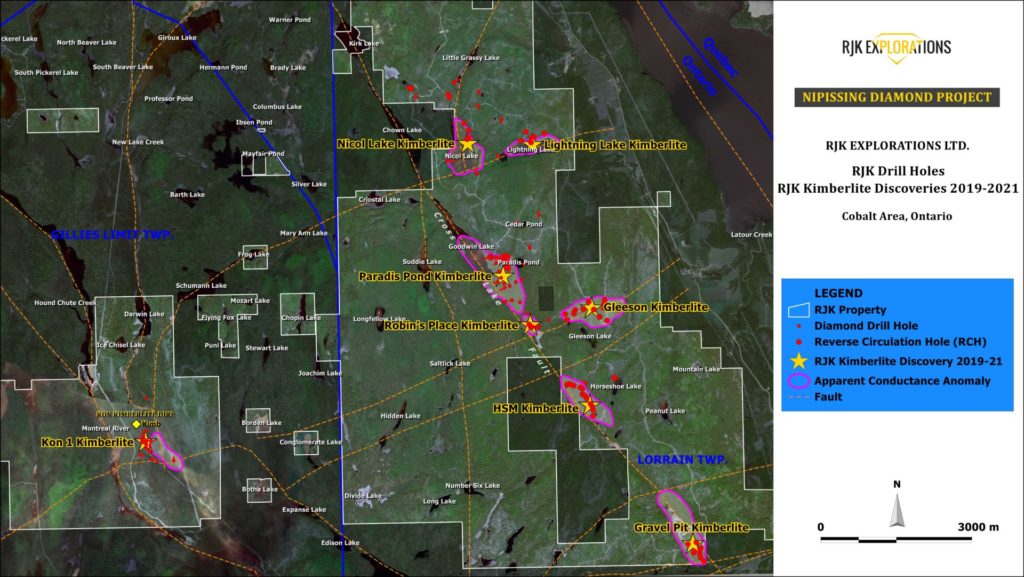
Paradis Area
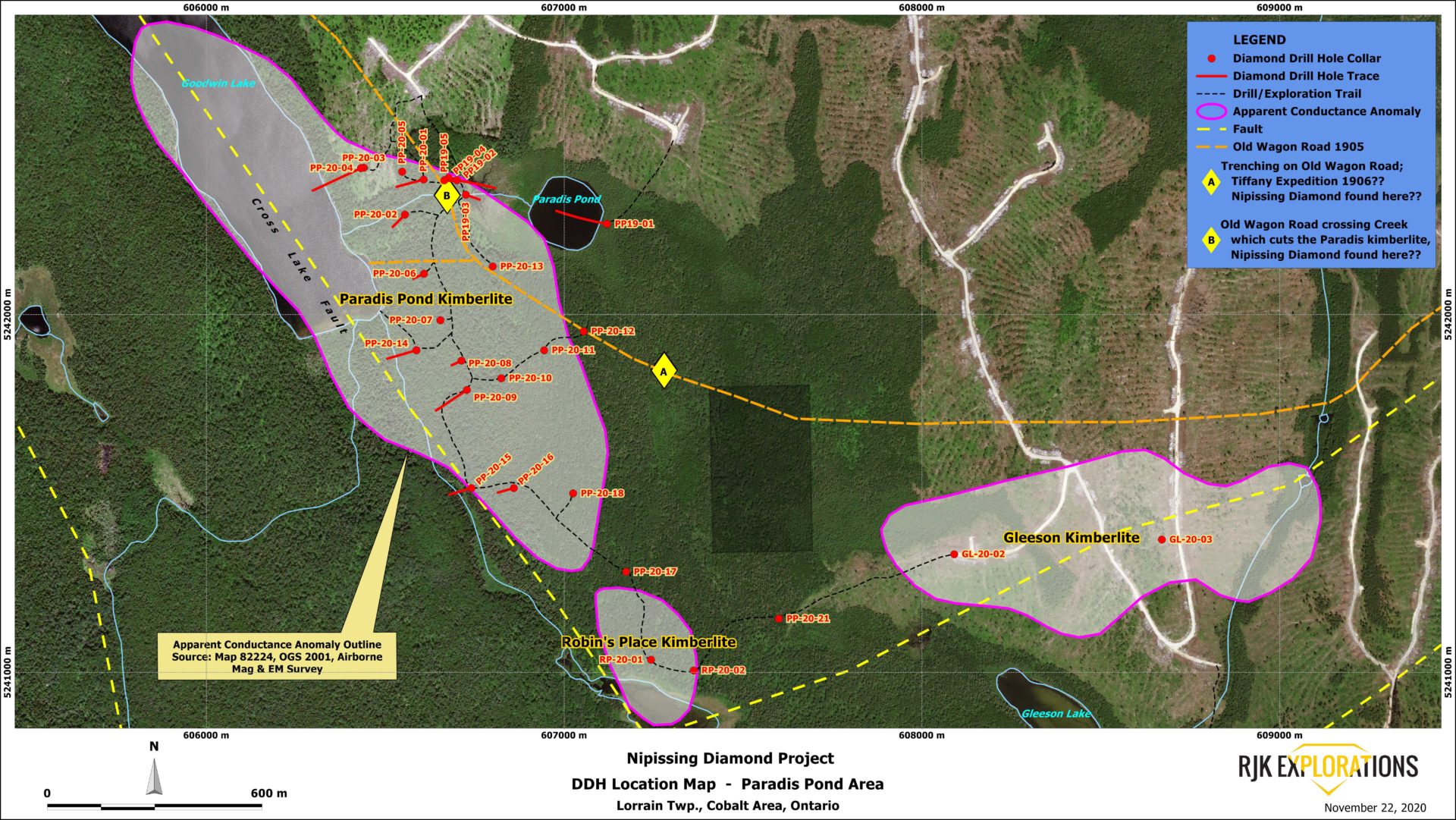
SRK renamed the Paradis discovery, and the others similar to Paradis, to a diamondiferous glacial till, encompassing large-grained KIMs. They do not represent native eruption kimberlites, but have been repositioned as secondary deposits, and yet host many kimberlite characteristics.
3. Evidence suggests the 700-800 Carat Nipissing Diamond may have been found on or near RJK’s Bishop diamond exploration claims. Where there was one large diamond discovered, the probability increases that more could be located underground in its source. Below is an actual sketch of the Nipissing Diamond, relative to an American Nickel drawn by a local settler for the Mining Journal in September, 1906.

4. Diamonds have been proven in 5/9 discoveries in testing so far. On April 1, 2020, RJK announced its first 18 microdiamonds discovered in a 22kg drill core sample from the Paradis body. CF Mineral research, led by the famous diamond mine finder, Dr. Charles E. Fipke, processed the core, discovering both clear, and coloured natural diamonds. In addition, a total of 28 KIM grain determinations were identified, that commonly derive from kimberlite sources, originating in the “diamond stability field.” The diamond stability field is located from depths of about 200 km in the earth at the lower boundary of the continental lithosphere with the convecting mantle. Of particular interest was the picroilmenite chemistry indicating only minor resorption of the diamonds present. Below shows the Garnet plots from some of the initial Paradis drill holes. G10s, High Chrome G9s, G12s, and Eclogitic Garnets are all included, often associated with diamonds.
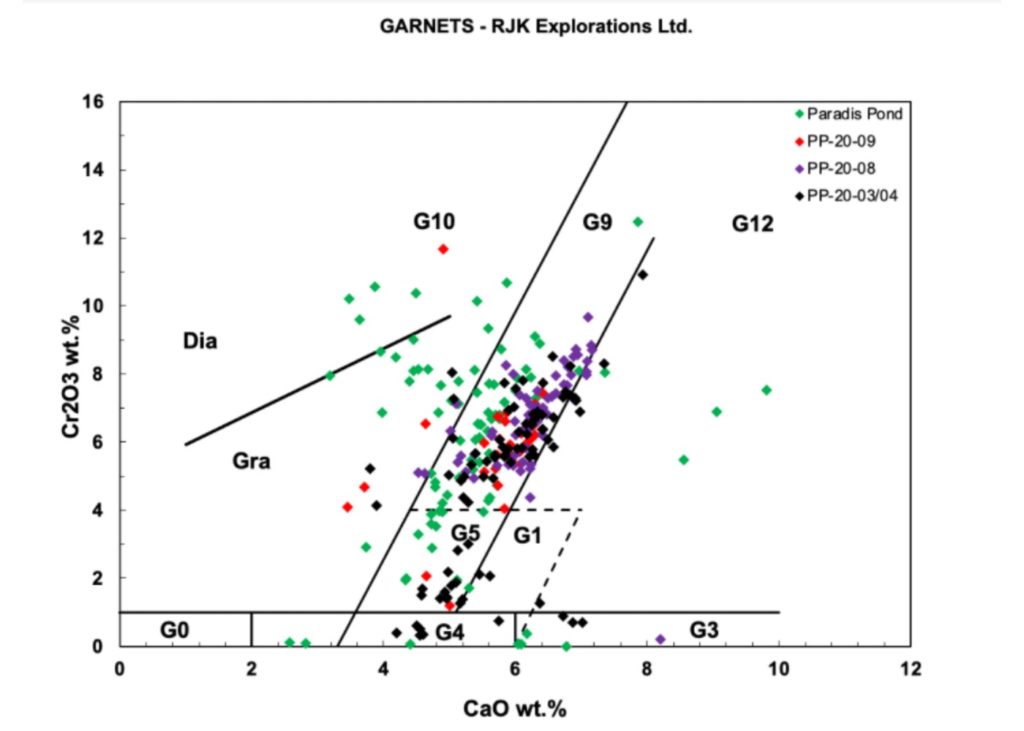
5. RJK has researched multiple potential Nipissing Diamond discovery locations within its land claims. RJK obtained articles dating back to 1906, one of which gave a clue to the potential Nipissing Diamond discovery location. In November, 1906, The Montreal Herald stated Tiffany and Co. sent a team of diamond experts and geologists to an area “west of Temiskaming,” after they cut and polished the Nipissing Diamond, to search for more. In addition, the company has confirmed the decedents of the original owner, Adolphe O. Aubin, still own pieces cut from the original Nipissing Diamond. Historical land claim research revealed that wealthy, famous New York investors staked claims on either side of Nicol Lake, shortly after the November 1906 article was published. There appears to be no reason for these wealthy individuals to stake these claims for Silver. Nicol Lake has proven to host high-chrome, diamond-inclusion, forsterite macrocrysts, and could be RJK’s most intriguing discovery for its diamond potential based on initial chemical research, proving an excessively deep source.
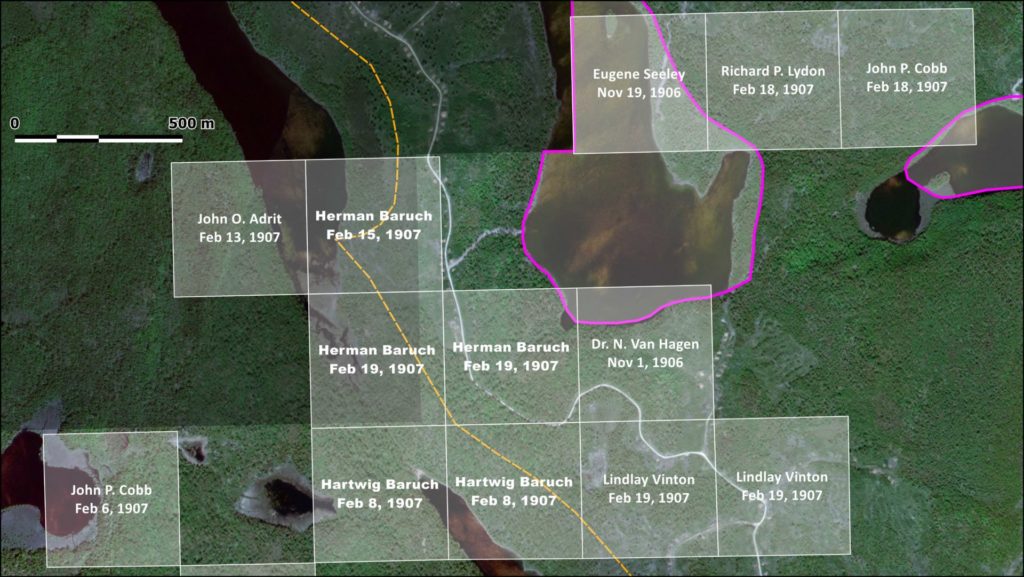
6. Kimberlites often appear in clusters and RJK holds a dominant land position within the Historical Cobalt Silver Mining Camp. The Company has identified targets that could represent the sources of its discoveries. De Beers, the world’s most successful diamond company historically, invested heavily in the area 2018-2020. They used mag and electro mag technology to map out geophysical signatures from Elk lake, to Temagami, and from South Temiskaming to Larder Lake. In the centre of this flight area is RJK’s properties in Cobalt.
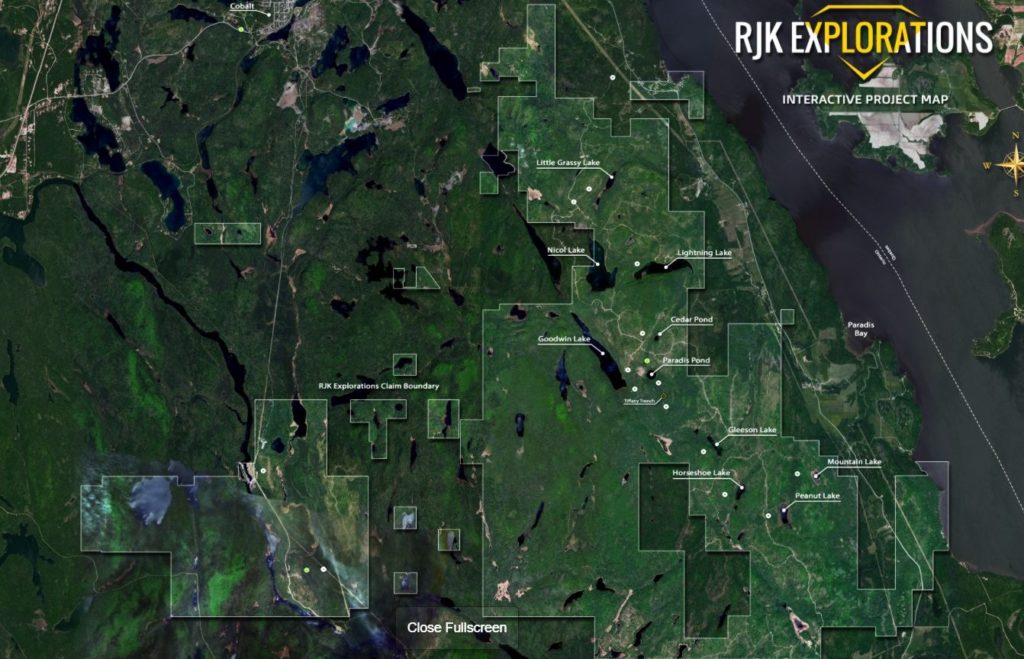
7. RJK’s first kimberlite discovery, the Kon Sill, is a more traditional kimberlite, dating back 153 million years, with at least 5 eruptive phases. On Feb 5, 2020, 100m of hypabyssal kimberlite was encountered on a vertical hole, beginning only 12m from surface, and 79m was encountered on a diagonal hole, facing west, starting from the centre of the magnetic low anomaly. A kimberlite dike was also drilled, encountering 21m of hypabyssal kimberlite. Initial tests of 260kg returned seven microdiamonds without inclusions.
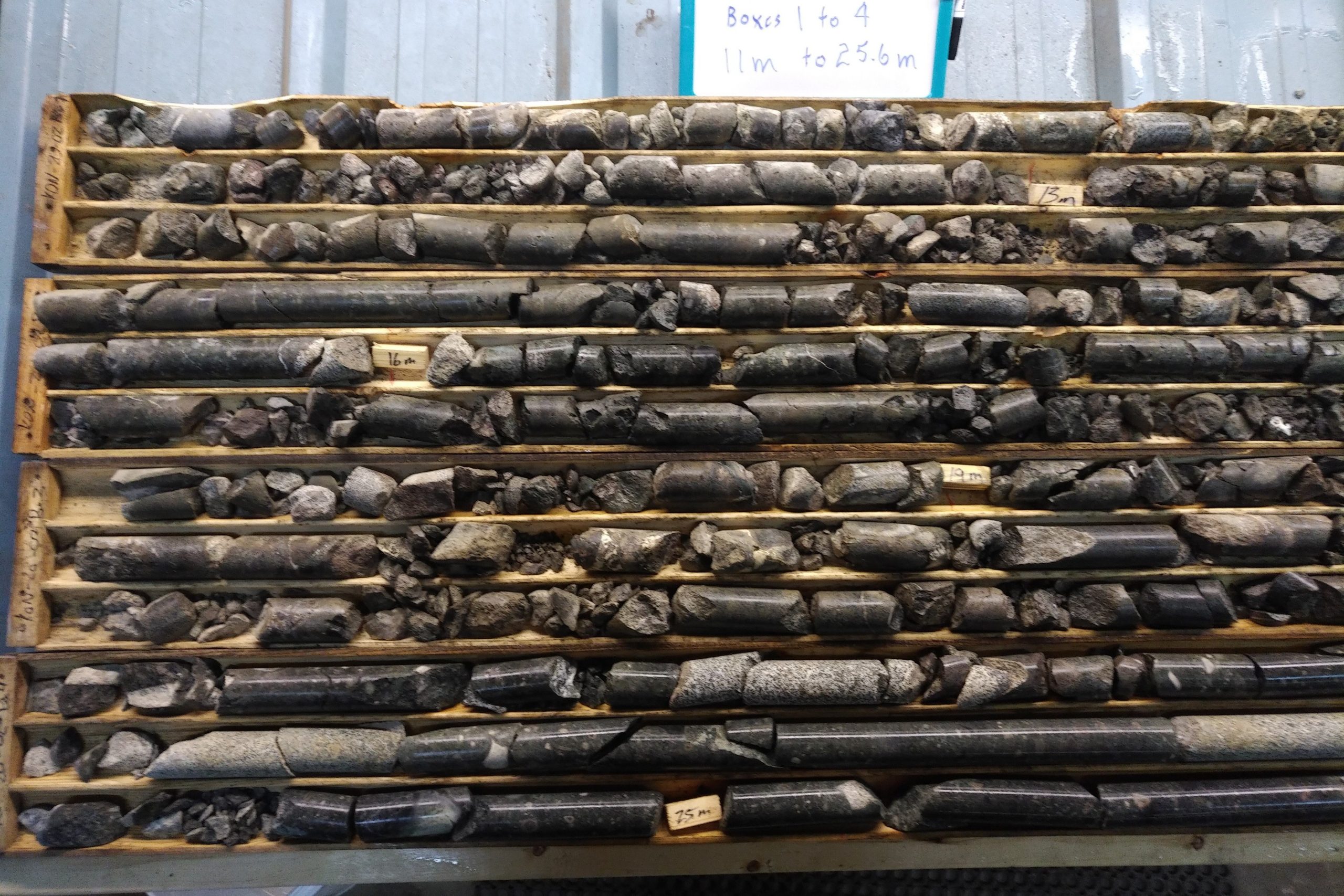
8. The odds of finding more kimberlites nearby has increased with RJK’s new discoveries. Kimberlites exist in clusters. There are already 46 discoveries and showings in the geological area, 29 of which have contained diamonds, but none have proven to be economic, yet. Very few have ever been tested properly using modern science and technology. None seem to be similar to RJK’s secondary diamondiferous till discoveries in the area, suggesting that source remains undiscovered.
9. RJK’s diamond exploration claims have incredible infrastructure relative to most diamond exploration zones in other parts of Canada, i.e. the remote Northwest Territories and Quebec. The cost of potential diamond mine construction would be greatly reduced compared to many of RJK’s peers. The majority of RJK’s land is high in elevation, with very little overburden above the bedrock. This allows for year-round drilling, and also, shallower drill holes to determine if anomalies are kimberlites, reducing costs and downtime.
10. RJK’s Board of Advisors have voluntarily signed up to the deal and each have extensive experience in diamond exploration. This is invaluable to a junior diamond exploration company, shortening the learning curve for management. In addition, RJK is consulting with kimberlite experts around the world to determine the best use of the Company’s money in its search.
11. Global diamond jewelry demand began to rebound in October and November of 2020, with the world’s largest diamond producer, Alrosa, now well above its pre-pandemic stock price levels, and the world’s second largest producer, De Beers, earning above-normal revenues and profits.
12. There are very few investments that in historical percentage terms, are more explosive than when new diamond mines are found. Details of these historical returns can be found in RJK’s Interactive Timeline, under the section, Diamond Rush 1.0. Diamond mine profitability is illustrated in the section Diamond Rush 2.0 in Canada, where it highlights De Beers paid back its entire billion dollar investment in the Victor diamond mine in year one, and experienced high profit margins for 11 years thereafter. While there are no guarantees that RJK will follow the same path as these previous success stories, the Company’s work completed to date certainly provides an opportunity for investors with risk tolerance. If large diamonds are found and RJK’s hypothesis is proven, the investment thesis would be further de-risked.
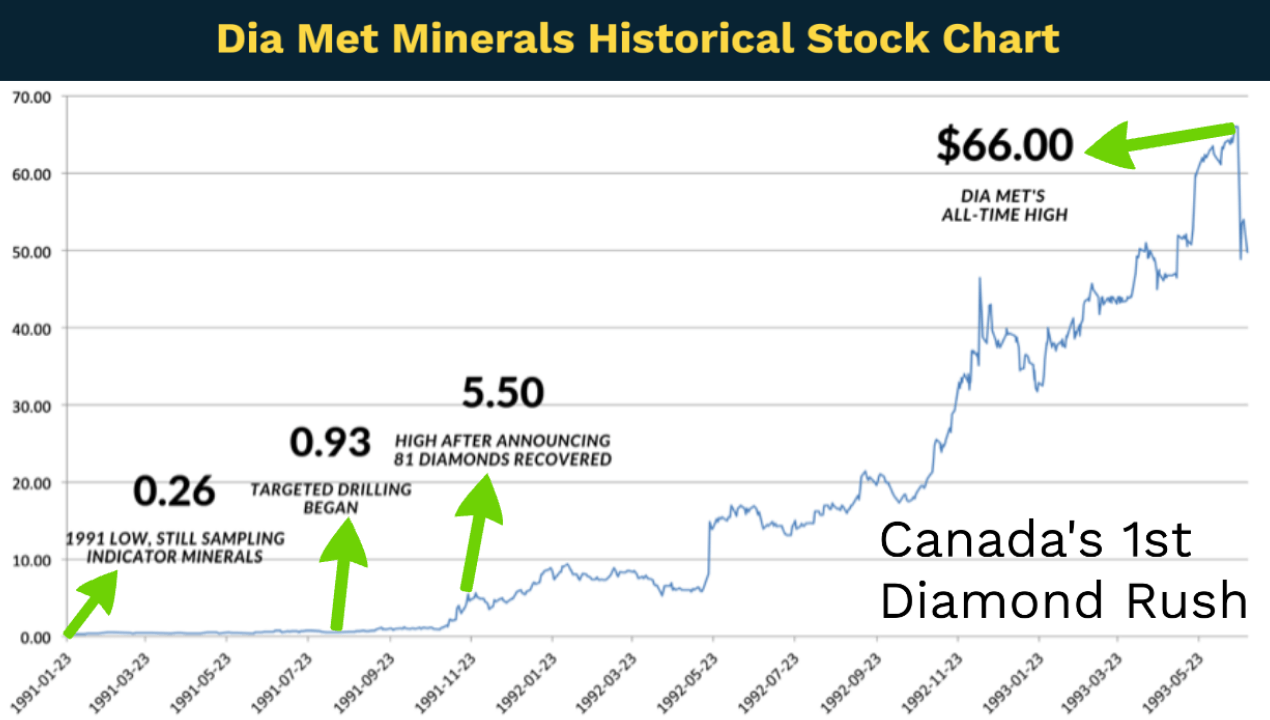

Be the First to Know About Our Diamond Discoveries.
Stock Information
Symbol: RJX.A
Exchange: TSX VENTURE EXCHANGE
Year End: December 31st
SEDAR FILINGS (Financials, MD&A, etc.): View sedar filings
Diamond Exploration Education and Useful Information
Diamond Creation and Kimberlite
Diamonds are created 150-300 kilometers below the surface of the earth, in areas of pressure higher than 40 thousand atmospheres, and temperatures of 950–1400 degrees Celsius. Type 2A diamonds are formed at even greater depths of 400-600km below the surface in subduction zones, and it is thought that this is where large diamonds like the Nipissing Diamond originate. Diamondiferous kimberlite pipes are brought to surface as a result of carbon dioxide gas accumulating over diamond creation zones, then and pushing its way up through deep cracks and faults in the earth’s crust, ending in a violent eruption. Diamonds and other gemstones are brought from the mantle below, to the surface through this process. Once the magma cools, a kimberlite pipe is formed, which is where the majority of diamonds can be found on earth.
Geological Requirements for Kimberlite
Broadly speaking, continental cratons are where most diamondiferous kimberlite pipes are found. Regional kimberlite locations are highly correlated with major structural faults, and more locally with cross faults. They are often discovered at contact points between different types of rocks, and usually appear in close proximity to other kimberlite pipes. Therefore, almost every new kimberlite discovery has lead to other nearby kimberlite discoveries in each respective region.
Glaciation and Kimberlite Pipe Topography
On average, roughly every 100,000 years, the earth experiences an ice age, where massive glaciers blanket the land. The most recent glacial period ended roughly 11,000 years ago, and covered the majority of North America. A glacier is formed as ice accumulates over time, reaching heights of up to 3km. The immense weight of a glacier crushes everything below, and the pressure creates a thin layer of water on the earth’s surface, allowing for glacial movement. As glaciers travel, they gouge out softer layers of rock, such as kimberlite, more than the harder layers, such as granite. Once glaciers melt, they leave depressions in areas where kimberlites have come to surface, often resulting in circular-shaped lakes or swamps above the pipes. Glaciers also leave striations in any exposed bedrock, which indicate the direction of the most recent glacial movements.
Kimberlite Indicator Minerals
After glaciers gauge out kimberlite, they then melt and recede, depositing pulverized kimberlite materials down-ice in new locations from their kimberlite origin. Diamonds aren’t the only gems that are discovered in kimberlite pipes. There are various other minerals such as Chrome Pyrope Garnets, Eclogetic Garnets, Chromites, Mg-Ilmenite, Chrome Diopsides, and Olivine (Forsterite), that when discovered, can be used to estimate the locations of their kimberlite origins. In areas of glaciation, using glacial striae, explorers can track kimberlite indicator minerals in reverse to the glacial movements, until they no longer find significant numbers of those indicator minerals. This is the main method of determining if a kimberlite source is in close proximity.
Soil Gas Hydrocarbon (SGH) Sampling
SGH sampling is a method of detecting buried inorganic material deposits, such as kimberlite, by measuring non-gaseous hydrocarbon compounds that have been synthesized by bacteria feeding on the target. Microbes decompose and release various specific hydrocarbons, which are diffused through the overburden to the surface. Discovery of specific ratios can indicate if a surface location is above, or in close proximity to, a kimberlite pipe. SGH can help detect mineral deposits up to 500m at depth, but in the case of potential kimberlites on RJK’s land claims, overburden is generally only between 2-5m above the bedrock, with a maximum of 20m. Activation laboratories LTD stated that DeBeers Canada use SGH over any prospective Kimberlite as it reduces their drill program by 50%. Of the companies that have tried SGH, over 90% have observed success in determining their targets.
Geophysics of Kimberlite Pipes
Geophysics utilize magnetic, EM (electromagnetic) and gravity in to determine relative differences of the physical signatures of the earth. This is particularly useful in diamond exploration, as each method tends to work well on kimberlite pipes, which often, but not always, have properties that are different relative to the surrounding rock. Kimberlite pipes can appear as either magnetic highs, or magnetic lows, depending on the position of the earth’s poles at that moment of the kimberlite eruption. However, some diamondiferous kimberlite pipes have been discovered with little to no geophysical signature. Interpretation of geophysical data can offer guidance on the size and shape of anomalies, as well as insight on where to position drill holes.
Drilling for Kimberlite
Once kimberlite targets are identified using the methods listed above, drilling the target is necessary to determine if the target contains kimberlite, and whether there is potential for diamonds. On rare occasions, if kimberlite outcrop is discovered on the surface, samples can be collected from those areas for analysis. If kimberlite is found, continued drilling is used to determine the diamond grade and dimensions of the pipe.
Caustic Fusion and Testing for Large Stones
Caustic fusion is a process to separate any diamonds from their kimberlite host rocks. Kimberlite drill core is loaded into stainless steel vessels with caustic soda set to high temperatures, which dissolves the material around the diamonds. After a set period of time, the solution is drained and screened, liberating the diamonds. If caustic fusion results are positive, a bulk sample of the kimberlite deposit is taken to determine the diamond grade of the kimberlite pipe, as well as search for the presence of large stones. Economics thereafter are determined by samples milled in a pilot mill for diamond recovery, and if results are favourable, full production may occur.
Be the First to Know About Our Diamond Discoveries.
